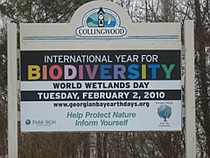A review of Carl Safina’s Becoming Wild
As a human being, one has been endowed with just enough intelligence to be able to see clearly how utterly inadequate that intelligence is when confronted with what exists.
Albert Einstein
There is no folly of the beasts of the earth which is not infinitely outdone by the madness of men.
Herman Melville, Moby Dick
Carl Safina’s Becoming Wild: how animal cultures raise families, create beauty and achieve peace is an intimate tapestry of the lives of three animals that exhibit meaningful cultures. Sperm whales, macaw parrots and the chimpanzees are visited, and with the help of scientists and naturalists, Carl Safina examines their families in the context of culture. What makes these animals who they are? For example, sperm whales have complex communications that allow extended families to stay together. A certain group or ‘clan’ of these whales will only communicate with the same members of that clan. Water is an incredible conduit for sound and as the whale moves across the oceans a whale can listen to and respond to another member many kilometres away. This also enables them to come to the defence of the young extremely quickly.
But how they come to the defence of their young is determined by learning specific to that group of whales. “Genes determine what can be learned, what we might do. Culture determines what is learned, how we do things…Social learning is special. Social learning gives you information stored in the brains of other individuals. You’re born with genes from just two parents; you can learn what whole generations have figured out. “ Culture presupposes that there is innovation in a group. The author gives us many examples of how just one animal can impart to others a new way of interaction in the world. So there is both the process of learning and conformity. Carl Safina goes on to define culture as “information that flowssocially and can be learned, retained and shared…Innovation is to culture what mutation is to genes; it’s the only way to make any process, the root of all change.” Becoming Wild is all about the amazing cultures found in Nature, not just human culture. Tragically, humans until recently thought they were the only beings on the planet that had culture. Roger Payne’s 1970 recording of the whales ignited a keen interest in other species. When Payne and Scott McVay published “Songs of Humpback Whales in Science in 1971 everything changed, well almost everything, except the continuation of the industrial killing of the great whales. People began to strongly question the need to destroy these sentient creatures. Was it imperative that margarine contained whale oil, for fertilizer or that machinery needed their oil?
It has always struck me that one of the great perversities perpetrated by fossil fuel corporations and their lobbyists is its active and unremitting ability to help kill off whales, something that men in boats throwing harpoons could never quite manage. You’d be correct in assuming that once whales were not murdering for their oil to light up houses because fossil fuels took over that task things would have improved. As the oceans lost large numbers of whales the boats had to go further and further. The cost in fossil oils became almost prohibitive but that only pleases the petroleum industry. When whaling vessels have to go to Antarctica to hunt that makes the oil executive richer. This is not to say that the petroleum industry pushed the hunters to destroy the whales, but it is part of a web of deceit and greed that has brought us to our ecological crisis. Carl Safina puts it succinctly: “Energy is always a moral matter. It has tended to reward immoral behaviour.”
What kept the butchery going was the ‘respectable’ quasi-scientific but highly political International Whaling Commission that was established in 1946. Unbelievably the Commission was set up to stop the extermination of whales so commercial whaling could continue! Quotas were arbitrarily established and then countries lied about their catches. A moratorium in 1979 came and went. Only public opinion saved the whales…or did it? Each of Safina’s chapters on whales are entitled ‘Families’. We learn about the close knit life of the whales and how unique each family is. All the members in a group of families ,a clan, use ‘codas’ that identity them specifically. Codas are clicking sounds that have specific meanings. Each family has its own unique series of clicks that give information. New skills to hunt fish are shared in the clan. Whale cultures teach the young not only how to survive but to learn their way of life. When adults are killed by humans in grotesque numbers, the adolescents have not yet been given the opportunity to have passed on to them life skills. Genes are not enough to survive. Fragmentation of families destroy the abilities to be innovative. If “culture is home” as the author describes it, whales lose their homes when families are torn apart. Carl Safina reluctantly says, “It means something acutely awful, I think: that the human species has made itself incompatible with the rest of Life on Earth.” To say this is to send a jolt of horror through the reader. Whales have responded to the question, “How best can we live where we are?” Will humans do the same?
To this day the Japanese still demand that whales are slaughtered for ‘research’. Arguing that whales are killing too many fish brings to mind the same spurious rant that wolves must be decimated to save the livestock industry, and to bring it closer to our human ‘home’, when indigenous groups lose their languages and land all is lost.
Scientists now know that sperm whales help the oceans to be a healthy enriching habitat for so many species. They are also a key species to slow down the climate crisis. When these whales dive, guided by sonar, into the great depths they capture great volumes of squid. They bring to the surface many nutrients, but just as importantly, the whales poop usually before they dive and it becomes an important source of nutrients for wildlife and the propagation of plankton that soak up the carbon dioxide.
Recently, a lot of effort has been brought forth to celebrate the lives of animals. David Attenborough’s documentaries and others such as “My Octopus Teacher all are trying to undo the self imposed calamity humans find themselves in; Becoming Wild does the same.
Whales are not alone in bringing a culture to their communities. Macaws and chimpanzees do the same. Safina writes: “Flexibility that becomes shared habit is called ‘custom.’ Customs learned through generations becomes tradition. Traditions make up culture… A culture can be a package of traditions, a repertoire of behaviours, skills, and tools characterizing a group in a place.” We humans can easily recognize our own cultures even if their everydayness is sometimes hidden from us, but once in a while innovation moves that culture to a new, enriched place. Conformity and nonconformity are equally vital in shaping a culture. But why can’t we accept that non-humans also have cultures? Becoming Wild is as much a contemplation and celebration of the cultures of three non-human species as it is of the human one, but Safina also speaks forcefully about the frailties that undermine human potential.
Safina’s chapters on the marvellous cultures of macaws and chimpanzees are also a conversation about who we are. He asks us to pose and try to answer difficult questions. Our obsession with violence is mirrored in that of chimpanzees. Why have our cultures allowed this to happen? Humans also place great value on beauty and on peace, so why haven’t we been able to supplant violence? It’s not that chimpanzees and humans don’t harbour “tender emphatic concerns for others and brave altruism.” We do, but both species are trapped in hierarchy and male, misplaced violence. “Chimps don’t create a safe space; they create a stressful, tension-bound, politically encumbered social world for them to inhabit. Which is what we do. This behavioural package exists only in chimpanzees and humans… Chimps may hold clues to the genesis of human irrationality, group hysteria, and political strongmen.” It appears to be abundantly clear that another primate, the bonobo, has it right when their cultures (of which there are many) are based in matriarchal supremacy, as peace reigns in those communities.
The author brings us to a research station on Peru’s Tambopata River where various species of macaw are studied. Here, too, are vibrant cultures that celebrate life. Safina wants to comprehend the nurturing place that beauty plays in the lives of these birds. He also wants to understand why beauty is so important for humans. His answer, at the end of the book, is succinct: “Living things anchor what is beautiful… Beauty is a simple crib-note for all that matters.” An astonishing response, I thought, and though seemingly esoteric, I believe that it makes perfect sense. Unlike the smaller green parrots, macaws are fabulously colourful, and even though they are strikingly beautiful and so visible there are few predators that can catch them. Their high level of intelligence has given them the means to avoid being eaten. Beauty is their reward. Safina harks back to Charles Darwin when he speaks about sexual selection and beauty. Beautiful males are chosen by females: it’s that simple. Safina takes up this idea: “Beauty—for the sake of beauty alone—is a powerful, fundamental, evolutionary force… The radical preference of Life is: beauty.”
In the Budongo Forest in Uganda Safina meets Cat Hobaiter, who has been observing some chimpanzee communities for over a decade. We learn about the lives of several chimps and their interactions within their groups. There is an astounding similarity between their gestures and those of young human children. Most are identical and have similar meanings. Human children use 52 distinct gestures, and chimps use 46 of those same ones. Gestures create the means for cohesion within the family, and greater tenderness, particularly between mother and baby. The chimp mother is the sole parent to bring up the babies, and peace resides there. Between males, and certainly in the complicated relationships the alpha male has with other males, violence is often ready to surface. Contrast this with bonobos’ path to peace: “little violence among males, between sexes, and among communities.”
Throughout the book there is a deep uncertainty that humans will have the courage and capacity to see that non-humans must be cherished and protected. Safina asserts that “caring that they’ll exist after we are gone is a moral matter… The things that threaten whole communities of other species also threaten us… Africa keeps the deepest of primate pasts. The question is whether it holds a future.”
Only humans can now answer that. Carl Safina’s tribute to whales, chimpanzees and macaws can empower us to embody a new ethic for this world: one that loves all life on Earth, not solely our individual tribes’ wellbeing.

